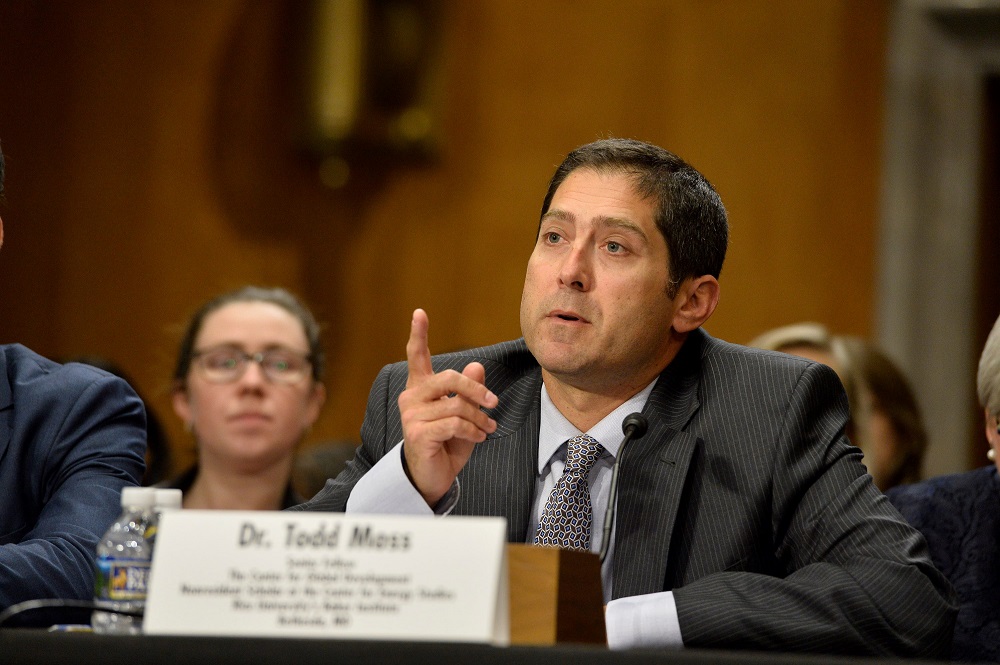While in Ethiopia early this week, President Obama heralded the release of the latest Feed the Future progress report, noting “there have been questions before about whether some signature initiatives can really make a difference. [Feed the Future] is making a difference in very concrete ways.”
Launched in response to the 2007-2008 global food price crisis, Feed the Future is the Administration’s flagship initiative for addressing global hunger, food security, and agricultural livelihoods. Along with Power Africa, the Initiative looks to be a key component of President Obama’s development legacy. This latest report provides a glimpse into what this $1 billion a year effort has achieved over the last five years. Even with this new report in hand, there are still more questions than answers.
There’s no denying that the Initiative’s focus on smallholder farmers has brought agriculture to the forefront of US development policy. But the real question is what progress has been made toward Feed the Future’s self-proclaimed goals of reducing poverty and stunting by 20 percent in target areas.
The 2015 progress report offers much food for thought on this question. While there are areas of real progress, the results are fragmentary, almost entirely based on outputs, and suffer from attribution challenges. Below we highlight our takeaways on progress and room for improvement.
New Data on Key Elements of Feed the Future…
The 2015 progress report offers new information on some of the key areas of Feed the Future. In particular, this year’s report offers new data on:
-
Honest accounting: In addition to disaggregating funding data by agency and year, the report also explicitly excludes food security efforts in Afghanistan, Pakistan, and Iraq. This careful consideration of what to include and exclude promotes greater accountability and transparency.
-
Innovation Labs: The report identifies US educational institutions with which Feed the Future has partnered to promote research efforts. Not only does this data provide helpful information about where and how the initiative is partnering domestically, but it also reflects Feed the Future’s commitment to R&D efforts and agricultural global public goods.
-
Gender: Continuing its high standard of reporting on gender, Feed the Future reports disaggregated data on every indicator for which this would be conceivably possible. For those counting, it’s 7 of the 13 results indicators.
-
Links to broader US government strategy: There’s explicit recognition of how Feed the Future fits with other US government efforts contributing to food security and poverty reduction. This policy coherence is especially visible in links between Feed the Future and the Administration’s broader vision to end extreme poverty.
- Agency coordination: Unlike other US government initiatives that tout interagency coordination, Feed the Future actually documents contributions from the 11 agencies involved in the effort. The report provides descriptions of roles and results achieved for each of the 11 implementing agencies, as well as funding information disaggregated by agency for fiscal years 2010-2014.
…But There Are Major Reporting Gaps on Outcomes and Attributions
After five years, Feed the Future’s progress is still almost entirely recorded through output data. Sure indicators like the number of children receiving nutrition support, hectares under improved technologies or management practices, and number of private-public partnerships formed are helpful to report on. But they tell us little about the intermediate outcomes that ultimately lead to improvements in poverty and stunting rates.
More worrisome is the progress report’s section on impacts. Feed the Future reports significant progress on poverty (for three countries) and stunting (for five countries). This is great news, but there are big caveats. Feed the Future investments are targeted in specific areas within the focus countries, known as ‘zones of influence.’ However the impact data—drawn primarily from secondary sources like DHS—only directly represent the ‘zones of influence’ in two of the 19 focus countries (Cambodia and Honduras). For others, like Ghana and Ethiopia, only national-level data are available.
The question of attribution is critical. Based on the reported data, it is impossible to make any conclusions about causality in the ‘zones of influences.’ We need more information, such as how other national and bilateral programs are contributing to the reduction of stunting and poverty in these areas. And, whether or not areas outside the ‘zones of influence’ are experiencing similar trends. The bottom line: interpret the data very cautiously.
Legislation introduced in the House and Senate would provide a long-term authorization of Feed the Future. Congress has the opportunity (and responsibility) to include reform elements around transparency and accountability that ensure Feed the Future delivers attributable impact and value for money. Feed the Future is making significant investments to fulfill US commitments to address global hunger and undernutrition. The initiative should be commended for continuing to report on its progress, but now is the time to get hard-nosed about connecting Feed the Future investments to impact.
Disclaimer
CGD blog posts reflect the views of the authors, drawing on prior research and experience in their areas of expertise. CGD is a nonpartisan, independent organization and does not take institutional positions.




